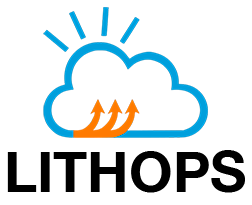Comparing Lithops with Other Distributed Computing Frameworks#
Lithops introduces a novel approach to distributed computing by leveraging serverless functions for massively parallel computations. Unlike traditional frameworks that require managing a cluster of nodes, Lithops utilizes Function-as-a-Service (FaaS) platforms to dynamically scale execution resources — down to zero when idle and massively up when needed.
In addition, Lithops offers a simple and consistent programming interface to transparently process data stored in Object Storage from within serverless functions. Its modular and cloud-agnostic architecture enables seamless portability across different cloud providers and FaaS platforms, effectively avoiding vendor lock-in.
PyWren#
PyWren is the precursor to Lithops. Initially designed to run exclusively on AWS Lambda using a Conda runtime and supporting only Python 2.7, it served as a proof of concept for using serverless functions in scientific computing.
In 2018, the Lithops team forked PyWren to adapt it for IBM Cloud Functions, which offered a Docker-based runtime. This evolution also introduced support for Object Storage as a primary data source and opened the door to more advanced use cases such as Big Data analytics.
By September 2020, the IBM PyWren fork had diverged significantly. The maintainers rebranded the project as Lithops, reflecting its broader goals — including multi-cloud compatibility, improved developer experience, and support for modern Python environments and distributed computing patterns.
For more details, refer to the Middleware’18 industry paper: Serverless Data Analytics in the IBM Cloud.
Ray and Dask#

Ray and Dask are distributed computing frameworks designed to operate on a predefined cluster of nodes (typically virtual machines). In contrast, Lithops relies on serverless runtimes, which allows for elastic and fine-grained scaling — including scaling to zero — with no idle infrastructure costs.
While Ray and Dask provide dynamic task scheduling and can autoscale within an IaaS environment, they always require a centralized “head node” or controller to manage the cluster, making them less suitable for ephemeral and cost-efficient cloud-native computing.
Additionally, the performance and elasticity of Ray and Dask in IaaS environments are not directly comparable to Lithops’ fully serverless model, which benefits from the near-infinite parallelism offered by cloud functions.
PySpark#

PySpark is the Python interface for Apache Spark, a well-established distributed computing engine. Spark is typically deployed on a static cluster of machines, either on-premises or in cloud environments using HDFS or cloud-native file systems.
PySpark is optimized for batch analytics using DataFrames and SparkSQL, but it lacks native integration with FaaS models. Its operational model is not inherently elastic and requires continuous management of a Spark cluster, which may not align with modern, fully managed, or serverless computing paradigms.
Serverless Framework#
Serverless Framework is a deployment toolchain designed primarily for building and deploying serverless web applications, especially on AWS, GCP, and Azure. It is widely used to manage HTTP APIs, event-driven services, and infrastructure-as-code (IaC) for cloud-native apps.
Although both Lithops and Serverless Framework leverage serverless functions, their objectives are fundamentally different:
Serverless Framework focuses on application deployment (e.g., microservices, REST APIs).
Lithops targets parallel and data-intensive workloads, enabling large-scale execution of Python functions over scientific datasets, data lakes, and unstructured data in object storage.
Summary#
Lithops stands out as a cloud-native, serverless-first framework purpose-built for parallel computing, data analytics, and scientific workloads. By abstracting away infrastructure management and providing built-in object storage integration, it delivers a unique balance of simplicity, performance, and multi-cloud compatibility — distinguishing it from traditional cluster-based frameworks and generic serverless tools alike.
